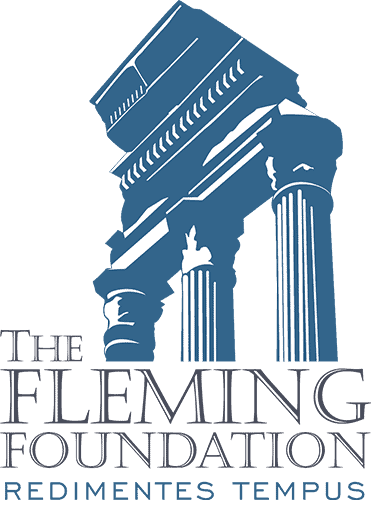Photios, the Franks, and the Filioque, Conclusion
The mutual hostility between the sees of Rome and Constantinople was only removed by a profane development: the palace-coup against the emperor led by a Slavic peasant named Basil who had risen from shoveling manure in the imperial stables to become the imperial protégé in whom Emperor Michael had misplaced his trust. Basil’s usurpation of the purple inaugurated the so-called Macedonian dynasty, the most dynamic period in Byzantine history (867-1025). Patriarch Photios was among the first victims of the coup. Besides being the emperor’s “man,” Photios’ row with the papacy was an obstacle to Basil’s goal of securing the assistance of the Latin maritime powers of Italy for his war against the Arabs. Photios was immediately sacked and the saintly eunuch-monk Ignatios was returned to the patriarchate, a move that was bound to gratify Rome. Photios’ condemnation and deposition was solemnized in a council at Constantinople in 869, which at the same time patched up relations with Rome while managing to squelch discussion about ecclesiastical jurisdiction in the Balkans (the Bulgars had since swung back into the orbit of Constantinople).
This state of affairs persisted until the death of Patriarch Ignatios in 877. Emperor Basil decided to return the scholar Photios to the throne—an ingenious move, for it secured a capable patriarch, reconciled Photios’ followers to the regime, and escaped Roman censure as Photios’ old adversary, Pope Nicholas, had since died. A subsequent council of 879-880, also held in Constantinople, exonerated Photios of the charges that had been leveled against him a decade previously. On Rome’s behalf, the pope’s legates received the communion and friendship of his brother patriarch.
Since the later Middle Ages, Latin and Greek Christians have seen in the temporary rupture between Photios and the papacy the origin of the lasting schism between the Churches. Half a century ago, the Roman Catholic priest and Byzantinist Francis Dvornik debunked this “Myth of the Photian Schism.” (Yes, Byzantine-rite Catholics may rest assured that Photios died in peace with Elder Rome; even if for many Eastern Orthodox Photios’ sanctity is inextricably bound up with his opposition to Latin “innovations,” I believe that the scholar-patriarch’s sponsorship of the evangelization of the Slavs—that precious race specially marked by Divine Providence for a unique role in the history of salvation—including the work of Sts. Cyril and Methodius, is cause for canonization enough).
Nevertheless, tough issues restlessly lurked behind and lived beyond the clash between Patriarch Photios and Pope Nicholas, and they loomed larger than the great-souled antagonists themselves. Even if the council of 879 restored communion between the Sees of Elder and New Rome, it failed to address—at least in a way satisfactory to all parties—the deep issues that had originally sparked the ninth-century conflict.
First, there was the question of jurisdiction. Although the Macedonian regime was bent on peace with Rome as ancillary to its own geopolitical ambitions, it had no intention of giving up its claims to those Balkan territories that it saw as belonging to its own sphere of influence. Nor did the patriarch intend to lose the rich harvest of Slav and Bulgar souls that the Cyrillic-Methodian mission had reaped. The cession of Bulgaria to Roman jurisdiction was never even on the table at the “union councils” of the later ninth century. Soon enough, another corridor of ecclesiastical “no-man’s land” between Rome and Constantinople would spark another conflagration—this time not in the Balkans, but in Southern Italy.
Second, there was the Filioque—the question of the ability of one half of Christendom to amend unilaterally the creed without consulting the other half, and the apparently momentous doctrinal implications carried by that amendment—(when it comes to the Holy Trinity, stakes are always high). Whatever Photios’ scruples about Latin Trinitarian theology in the 860s, he had apparently let them be in 879 when he agreed to embrace Roman communion. At the council, the Filioque had not received the critical discussion that it warranted. That was a grave mistake.
Later on, Byzantine polemicists down the centuries would recycle, again and again, the arguments that Photios had expounded against the Filioque. They would remember him not as the consummate scholar, not even as sponsor of the evangelization of the Slavs, but as the first conscientious objector to the presumptuous innovations of Rome. Meanwhile, the children and defenders of Roman prerogatives remembered Photios as the “first schismatic” who fabricated accusations against the West as pretexts cloaking his own ambition and his servility to his imperial handlers.
Even if it were a mere “myth,” myths are powerful. Medieval theologians and polemicists drew upon the legacy and precedent of Photios as a means to explain the schism that was only a post-Photian development—and perhaps only coming into existence in their own days—and even as a means to justify themselves in contributing to the schism by (sometimes) deploying Photios’ own arguments. I am grateful to Dr. Thomas Fleming for recalling Photios’ inestimable contributions, for all times, as a philologist and man of letters. For such a man—a scholar of the classics, a renovator of education, and apostle of the Slavs—to have been thus cartoonishly reduced in historical memory to the status of mere villain makes Photios, I daresay, one of the most poignant victims of the schism.



